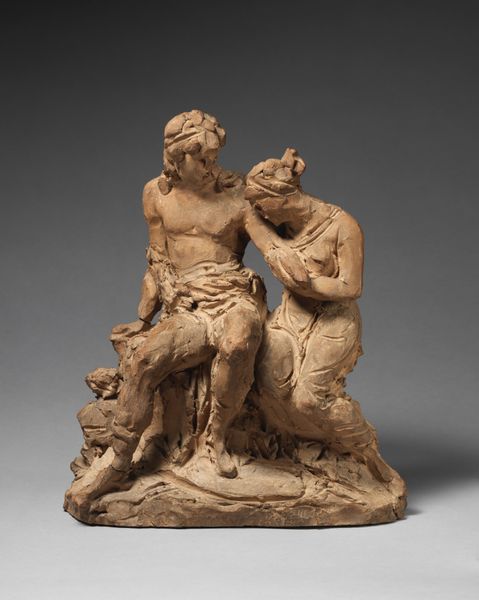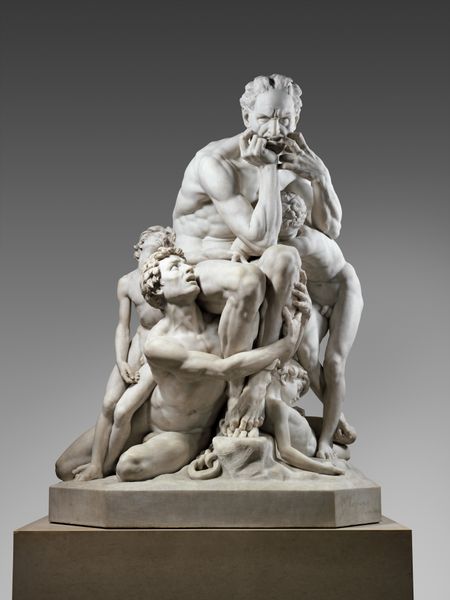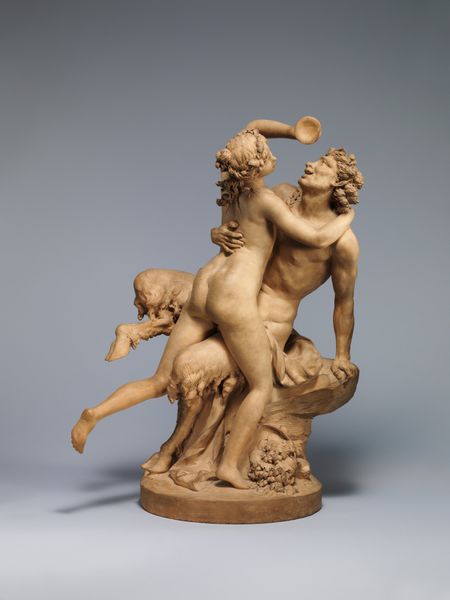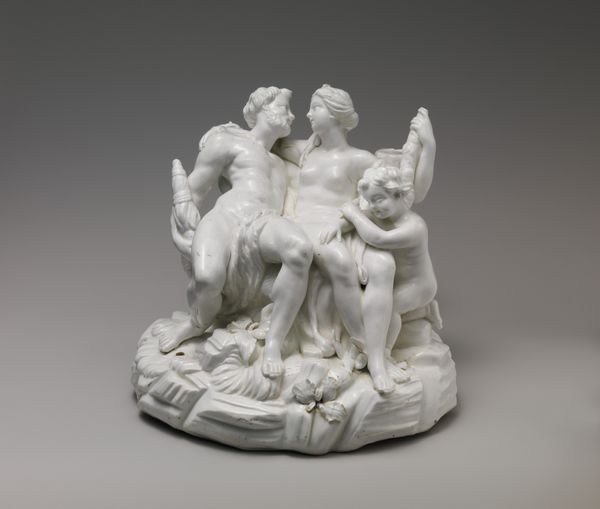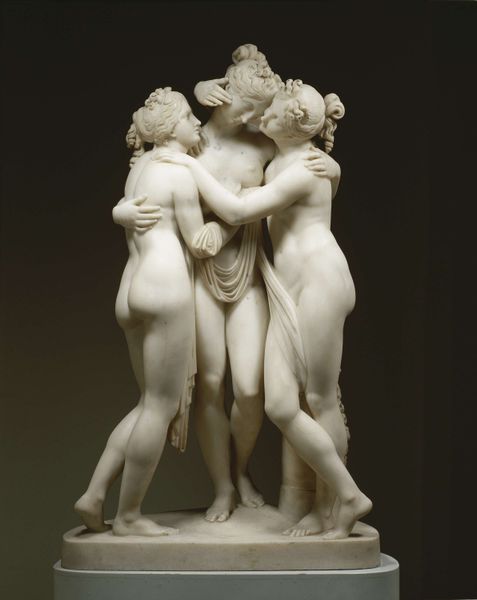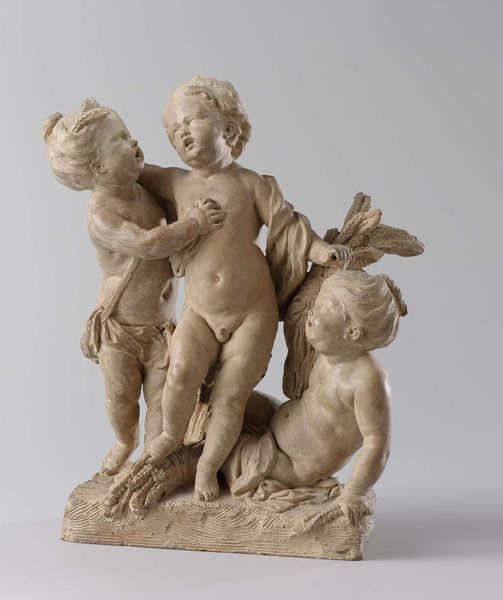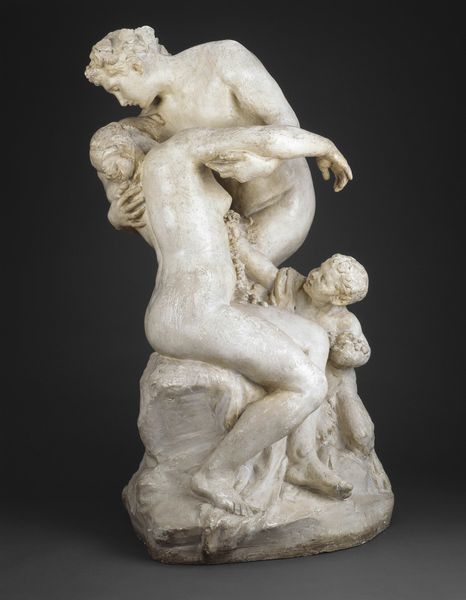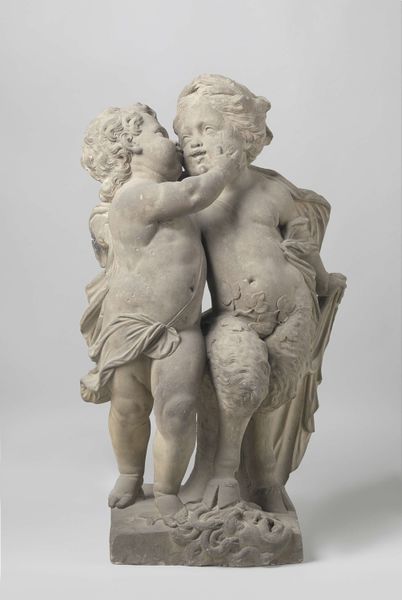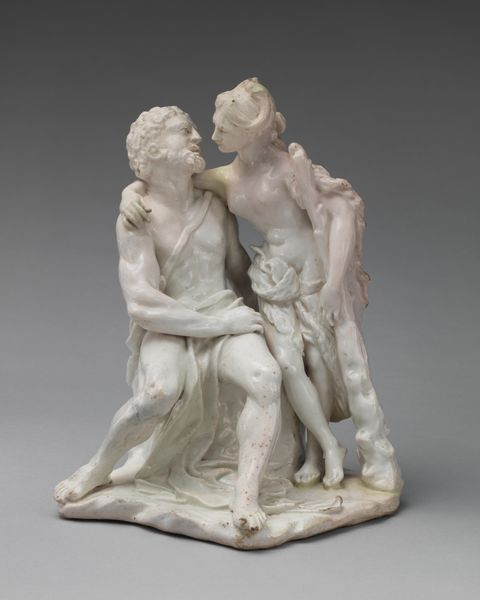
Bacchus and a Nymph with a Child and Grapes 1785 - 1805
0:00
0:00
sculpture
#
neoclacissism
#
classical-realism
#
figuration
#
child
#
sculpture
#
group-portraits
#
romanticism
#
history-painting
#
decorative-art
#
nude
Dimensions: Height: 18 1/2 in. (47 cm)
Copyright: Public Domain
Curator: What a delightful terracotta! Its exuberant mood really draws you in, doesn't it? Editor: It certainly does. The scene radiates bacchanalian joy. We're looking at Clodion's sculpture, "Bacchus and a Nymph with a Child and Grapes," dating from between 1785 and 1805. Clodion, or Claude Michel, was quite the figure in late 18th-century France. His work exemplifies the Neoclassical and Romantic sensibilities of that era. Curator: Neoclassical, but with such playful dynamism. The composition swirls with movement, and that tactile modelling… there’s a sense of carefree abandon that breaks with the stricter academic style. Look at the infant—a cupid or perhaps a young Bacchus—reaching up. The figures all entwine together beautifully! Editor: That interplay of figures, Bacchus and the nymph in particular, reminds us of the long history of classical imagery being used to explore themes of sensuality and fertility. Bacchus, the god of wine, represents not just intoxication, but also liberation, emotional release. The grapes are, of course, key symbols – not just of Bacchus but of abundance and life’s pleasures. And that nymph's gesture, offering them, it feels charged with symbolic weight. Curator: Exactly! This piece reflects a larger fascination in French society at the time with classical antiquity. Sculptures like these often adorned aristocratic homes, speaking to ideals of beauty, pleasure, and a refined lifestyle. However, even within that context, Clodion's unique touch made his works very popular. The market valued their accessibility and celebration of sensuality. Editor: The placement of the figures interests me too. The child at the base anchors the piece, but also seems to be reaching toward something beyond our view, linking the earthly and divine realms. Consider how viewers might interpret it within different cultural and psychological contexts. Is this idealized parenthood, or a cautionary tale about indulgence? Curator: Well, I suspect its patrons at the time mostly saw the charm and overt classical allusion without overthinking things. But it makes us think now, certainly. It gives insight into the socio-cultural norms about mythology as an indication of elite status and a reflection of the times when moral lines were a little more blurry for certain populations. Editor: Precisely. Clodion captured an interesting moment. Looking at "Bacchus and a Nymph," one finds a convergence of pleasure, artistic expression, and the intricate sociopolitical landscape that influenced it. Curator: Indeed, a sculpture as enjoyable and thought-provoking today as it was then, albeit with a modern and knowing eye.
Comments
No comments
Be the first to comment and join the conversation on the ultimate creative platform.
